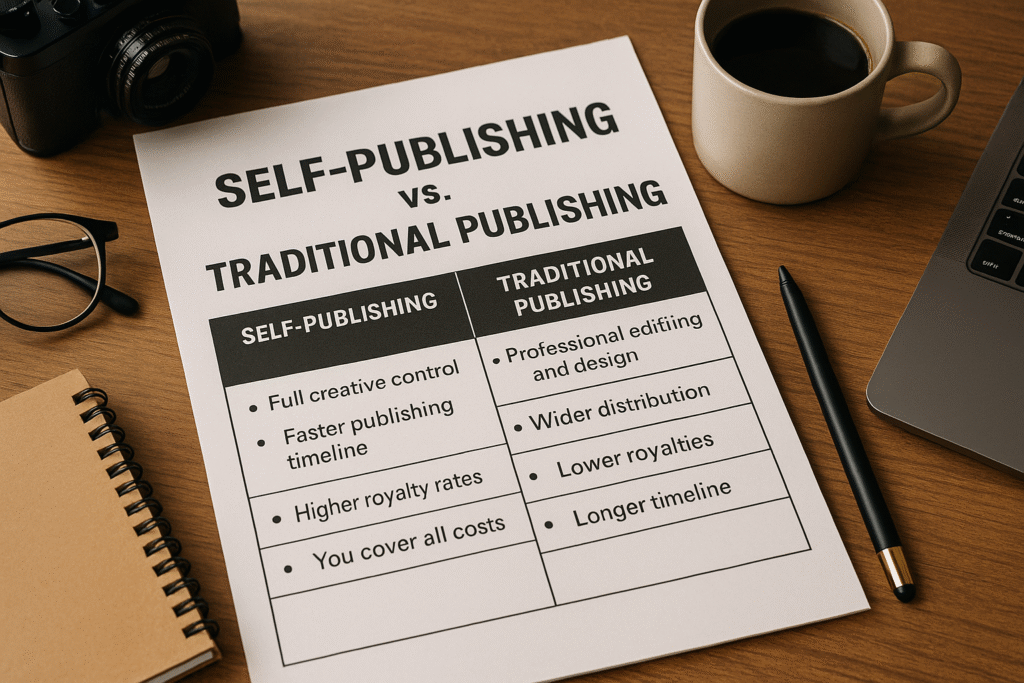
For every aspiring author, one big question arises after finishing a manuscript: Should I self-publish or pursue a traditional publisher?
Both paths have advantages and challenges, and the right choice depends on your goals, resources, and personal preferences.
This guide will walk you through the differences so you can confidently choose your path to publishing success.
Self-publishing means you take control of the entire process — from editing to cover design to marketing.
Popular platforms include Amazon Kindle Direct Publishing (KDP), IngramSpark, and Smashwords.
Pros:
Full creative control over design, title, and content,
Faster publishing timeline,
Higher royalty rates (often 60–70%),
Ability to publish multiple books quickly,
Cons:
You cover all upfront costs (editing, design, marketing),
Requires strong self-promotion skills,
Limited access to certain bookstores without distribution services,
Traditional publishing means signing with a publishing house that funds, edits, prints, and markets your book.
You typically need a literary agent to pitch your manuscript.
Pros:
Professional editing and design included,
Wider distribution in physical bookstores,
Prestige and credibility from being backed by a publisher,
Potential for advance payments before sales,
Cons:
Long timelines — often 12–24 months from acceptance to release,
Lower royalties (usually 5–15%),
Less control over cover design, pricing, and release strategy,
Highly competitive and rejection-heavy process,
Before deciding, consider:
Timeline: Do you want your book out in months or are you willing to wait years?
Budget: Can you invest in your own publishing process?
Control: Do you want final say in creative and marketing decisions?
Goals: Is your priority creative freedom, prestige, or income?
Hybrid publishers combine aspects of both worlds. Authors share costs but also benefit from professional services and distribution networks.
It’s worth considering if you want quality support without losing all creative control.
If you value speed, control, and higher royalties, self-publishing might be your best fit.
If you want prestige, professional backing, and traditional bookstore placement, traditional publishing is the way to go.
Whichever route you choose, the key is to produce a high-quality book and invest in marketing so your work reaches the readers it deserves.